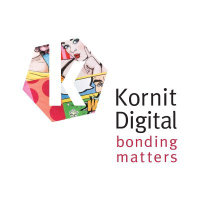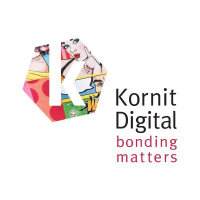
Kornit Digital Ltd
NASDAQ:KRNT


| US |

|
Johnson & Johnson
NYSE:JNJ
|
Pharmaceuticals
|
| US |

|
Berkshire Hathaway Inc
NYSE:BRK.A
|
Financial Services
|
| US |

|
Bank of America Corp
NYSE:BAC
|
Banking
|
| US |

|
Mastercard Inc
NYSE:MA
|
Technology
|
| US |

|
UnitedHealth Group Inc
NYSE:UNH
|
Health Care
|
| US |

|
Exxon Mobil Corp
NYSE:XOM
|
Energy
|
| US |

|
Pfizer Inc
NYSE:PFE
|
Pharmaceuticals
|
| US |

|
Palantir Technologies Inc
NYSE:PLTR
|
Technology
|
| US |

|
Nike Inc
NYSE:NKE
|
Textiles, Apparel & Luxury Goods
|
| US |

|
Visa Inc
NYSE:V
|
Technology
|
| CN |

|
Alibaba Group Holding Ltd
NYSE:BABA
|
Retail
|
| US |

|
3M Co
NYSE:MMM
|
Industrial Conglomerates
|
| US |

|
JPMorgan Chase & Co
NYSE:JPM
|
Banking
|
| US |

|
Coca-Cola Co
NYSE:KO
|
Beverages
|
| US |

|
Walmart Inc
NYSE:WMT
|
Retail
|
| US |

|
Verizon Communications Inc
NYSE:VZ
|
Telecommunication
|
Utilize notes to systematically review your investment decisions. By reflecting on past outcomes, you can discern effective strategies and identify those that underperformed. This continuous feedback loop enables you to adapt and refine your approach, optimizing for future success.
Each note serves as a learning point, offering insights into your decision-making processes. Over time, you'll accumulate a personalized database of knowledge, enhancing your ability to make informed decisions quickly and effectively.
With a comprehensive record of your investment history at your fingertips, you can compare current opportunities against past experiences. This not only bolsters your confidence but also ensures that each decision is grounded in a well-documented rationale.
Do you really want to delete this note?
This action cannot be undone.

| 52 Week Range |
13.92
32.91
|
| Price Target |
|
We'll email you a reminder when the closing price reaches USD.
Choose the stock you wish to monitor with a price alert.

|
Johnson & Johnson
NYSE:JNJ
|
US |

|
Berkshire Hathaway Inc
NYSE:BRK.A
|
US |

|
Bank of America Corp
NYSE:BAC
|
US |

|
Mastercard Inc
NYSE:MA
|
US |

|
UnitedHealth Group Inc
NYSE:UNH
|
US |

|
Exxon Mobil Corp
NYSE:XOM
|
US |

|
Pfizer Inc
NYSE:PFE
|
US |

|
Palantir Technologies Inc
NYSE:PLTR
|
US |

|
Nike Inc
NYSE:NKE
|
US |

|
Visa Inc
NYSE:V
|
US |

|
Alibaba Group Holding Ltd
NYSE:BABA
|
CN |

|
3M Co
NYSE:MMM
|
US |

|
JPMorgan Chase & Co
NYSE:JPM
|
US |

|
Coca-Cola Co
NYSE:KO
|
US |

|
Walmart Inc
NYSE:WMT
|
US |

|
Verizon Communications Inc
NYSE:VZ
|
US |
This alert will be permanently deleted.
 Kornit Digital Ltd
Kornit Digital Ltd
Kornit Digital Ltd
Nestled within the intricate tapestry of the textile and fashion industries, Kornit Digital Ltd. emerges as a technological virtuoso, harmonizing the artistry of design with the precision of digital printing. Founded in 2002 and headquartered in Israel, Kornit has reimagined the traditional textile printing landscape with its state-of-the-art digital printing solutions. The company specializes in developing, manufacturing, and marketing industrial digital printing technologies for the garment, apparel, and home décor industries. Kornit’s innovation lies in its eco-friendly, sustainable approach to textile production, which eliminates the need for water as a primary resource in printing, reducing the environmental impact significantly. This aligns beautifully with the growing demand for sustainable practices in fashion and textiles, propelling Kornit as a leader in its niche field.
Kornit Digital generates revenue primarily through the sale of its advanced printing systems and the recurring supply of its proprietary inks and consumables. The company’s unique model allows customers to execute prints directly onto textiles from digital files, minimizing waste and aligning with the need for fast-paced, on-demand production. Kornit's business also thrives on its suite of services, enhancing client efficiency and profitability, which includes support, maintenance, and consultancy to optimize machine performance. By enabling its clients to meet the ever-evolving demands for high-quality, customized textile products swiftly and sustainably, Kornit not only fuels its own growth but also helps redefine the textile printing paradigm in the digital era.

Nestled within the intricate tapestry of the textile and fashion industries, Kornit Digital Ltd. emerges as a technological virtuoso, harmonizing the artistry of design with the precision of digital printing. Founded in 2002 and headquartered in Israel, Kornit has reimagined the traditional textile printing landscape with its state-of-the-art digital printing solutions. The company specializes in developing, manufacturing, and marketing industrial digital printing technologies for the garment, apparel, and home décor industries. Kornit’s innovation lies in its eco-friendly, sustainable approach to textile production, which eliminates the need for water as a primary resource in printing, reducing the environmental impact significantly. This aligns beautifully with the growing demand for sustainable practices in fashion and textiles, propelling Kornit as a leader in its niche field.
Kornit Digital generates revenue primarily through the sale of its advanced printing systems and the recurring supply of its proprietary inks and consumables. The company’s unique model allows customers to execute prints directly onto textiles from digital files, minimizing waste and aligning with the need for fast-paced, on-demand production. Kornit's business also thrives on its suite of services, enhancing client efficiency and profitability, which includes support, maintenance, and consultancy to optimize machine performance. By enabling its clients to meet the ever-evolving demands for high-quality, customized textile products swiftly and sustainably, Kornit not only fuels its own growth but also helps redefine the textile printing paradigm in the digital era.





























 You don't have any saved screeners yet
You don't have any saved screeners yet
